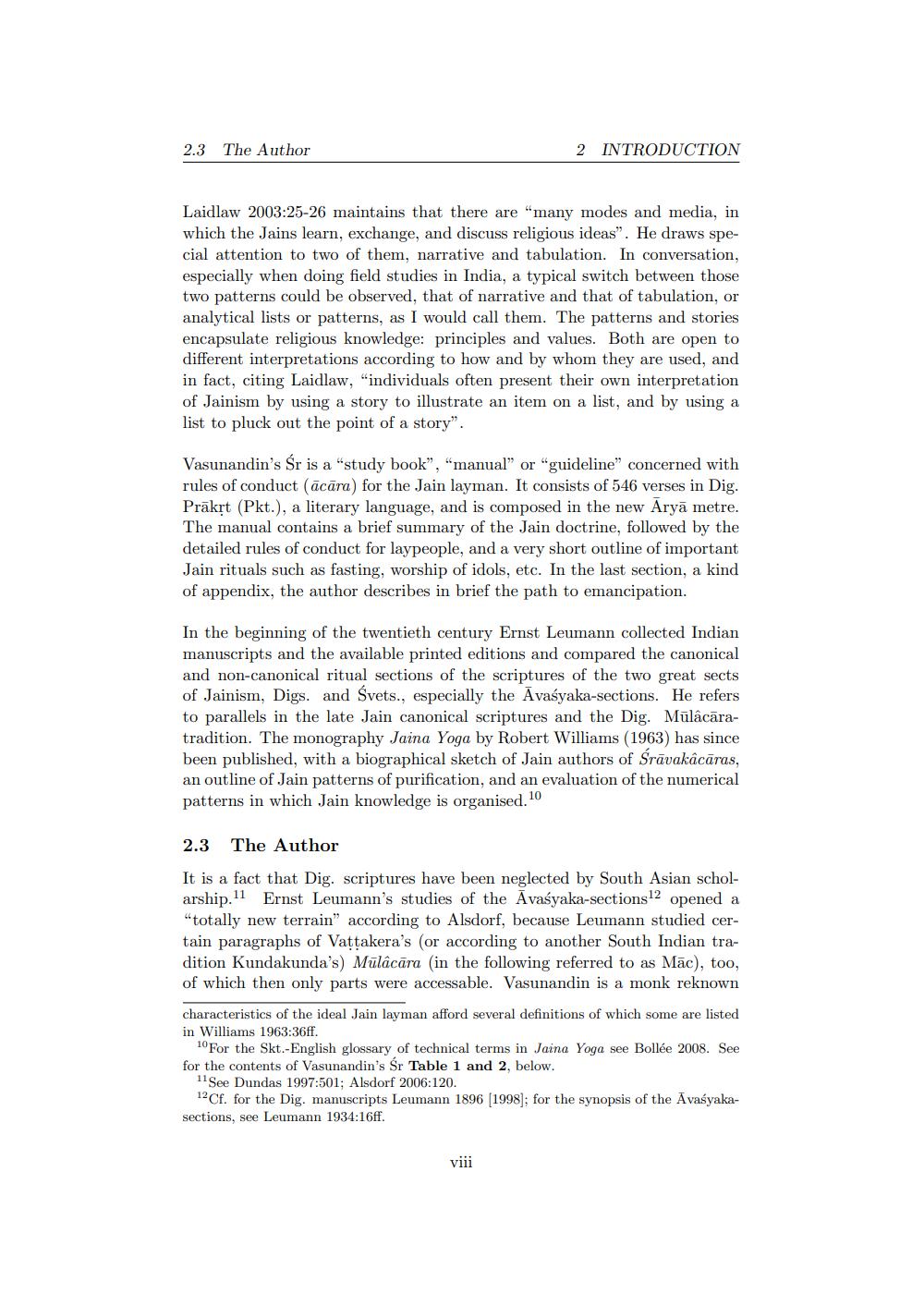________________
2.3
The Author
2 INTRODUCTION
Laidlaw 2003:25-26 maintains that there are many modes and media, in which the Jains learn, exchange, and discuss religious ideas”. He draws special attention to two of them, narrative and tabulation. In conversation, especially when doing field studies in India, a typical switch between those two patterns could be observed, that of narrative and that of tabulation, or analytical lists or patterns, as I would call them. The patterns and stories encapsulate religious knowledge: principles and values. Both are open to different interpretations according to how and by whom they are used, and in fact, citing Laidlaw, "individuals often present their own interpretation of Jainism by using a story to illustrate an item on a list, and by using a list to pluck out the point of a story".
Vasunandin's Śr is a "study book", "manual" or "guideline" concerned with rules of conduct (ācāra) for the Jain layman. It consists of 546 verses in Dig. Prakrt (Pkt.), a literary language, and is composed in the new Aryā metre. The manual contains a brief summary of the Jain doctrine, followed by the detailed rules of conduct for laypeople, and a very short outline of important Jain rituals such as fasting, worship of idols, etc. In the last section, a kind of appendix, the author describes in brief the path to emancipation.
In the beginning of the twentieth century Ernst Leumann collected Indian manuscripts and the available printed editions and compared the canonical and non-canonical ritual sections of the scriptures of the two great sects of Jainism, Digs. and Svets., especially the Avasyaka-sections. He refers to parallels in the late Jain canonical scriptures and the Dig. Mūlâcāratradition. The monography Jaina Yoga by Robert Williams (1963) has since been published, with a biographical sketch of Jain authors of Srāvakácāras, an outline of Jain patterns of purification, and an evaluation of the numerical patterns in which Jain knowledge is organised. 10
2.3
The Author
It is a fact that Dig. scriptures have been neglected by South Asian scholarship.11 Ernst Leumann's studies of the Avasyaka-sections12 opened a "totally new terrain" according to Alsdorf, because Leumann studied certain paragraphs of Vattakera's (or according to another South Indian tradition Kundakunda's) Mülâcāra (in the following referred to as Māc), too, of which then only parts were accessable. Vasunandin is a monk reknown
characteristics of the ideal Jain layman afford several definitions of which some are listed in Williams 1963:36ff.
10 For the Skt.-English glossary of technical terms in Jaina Yoga see Bollée 2008. See for the contents of Vasunandin's Sr Table 1 and 2, below.
11 See Dundas 1997:501; Alsdorf 2006:120.
12Cf. for the Dig. manuscripts Leumann 1896 (1998); for the synopsis of the Avasyakasections, see Leumann 1934:16ff.
viii




